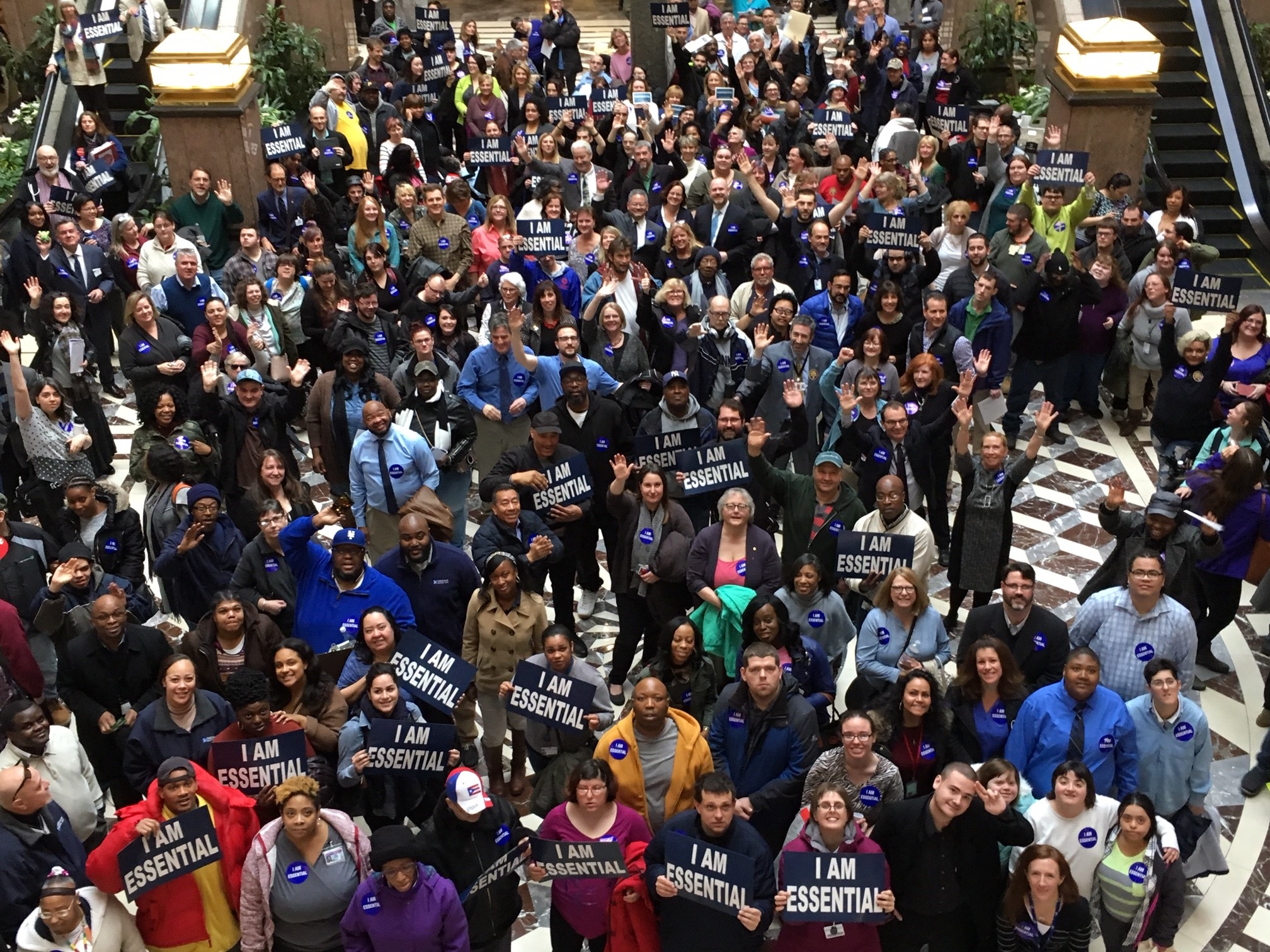


Most nonprofits are small and community-based, serving local needs: 92% spend less than $1 million annually; 88% spend less than $500,000.

Nonprofits employ more than 10% of America’s private workforce – more jobs than in manufacturing, construction, or finance.

Less than 3% of nonprofits lobby to advance their missions – compared to 100% that have the legal right to do so.
America’s 1.3 million charitable nonprofits enrich the lives of everyone, in ways both seen and unseen. Nonprofit Impact Matters pulls back the curtain and tells the story of nonprofits from their perspective. It also provides practical insights and key national- and state-level data.
President & CEO, BoardSource
This is a vital intervention to document, celebrate, and defend the role of nonprofits in our communities, economy, and culture. The National Council of Nonprofits has done it again.
President, Ford Foundation
Knowledge is power, and this engaging resource provides nonprofit leaders and supporters the information they need to advocate for the continued vitality of their missions. As a former congressional staffer, I also think this should be required reading for our elected officials as they consider how policy changes will impact this vital sector of our society.
Executive Director, BJC
Operating a nonprofit is not easy these days. Several challenges exist. Some are internal to each organization. Others are external and larger than any one organization can address alone. By tapping into the power of nonprofit networks, including for advocacy, nonprofits can continue improving lives and creating more equitable and thriving communities.
The increase in needs for human services has been documented by multiple recent studies cited and explained in the report. Those increasing needs have strained the ability of many nonprofits, especially small to midsized nonprofits in local communities, to keep up with the need for services.
Nonprofit missions are vulnerable to actions by policymakers who, whether intentionally or not:
A change in federal law can have nationwide ramifications, but changes in a state’s laws can be just as consequential for the nonprofits in that state. And data show the odds of policy changes being made are much greater at the state than the federal level.
Nonprofits’ strength is in our collective numbers. Nonprofits exist in every community, are closest to the problems, and understand the issues.
Since nonprofits see the solutions to the community’s challenges firsthand, nonprofits should be sharing their insights with policymakers to help them make informed decisions. Policymakers need and deserve to hear the voices of their nonprofit constituents.
Nonprofits have the constitutional right, statutory authority, and moral obligation to advocate and even lobby on behalf of our organizations and the individuals and communities they serve. In fact, charitable nonprofits can—and absolutely should—speak out on matters of public policy that affect their missions.
2023 Nonprofit Workforce Survey Results: Communities Suffer as Nonprofit Workforce Shortage Crisis Continues (National Council of Nonprofits, August 2023)
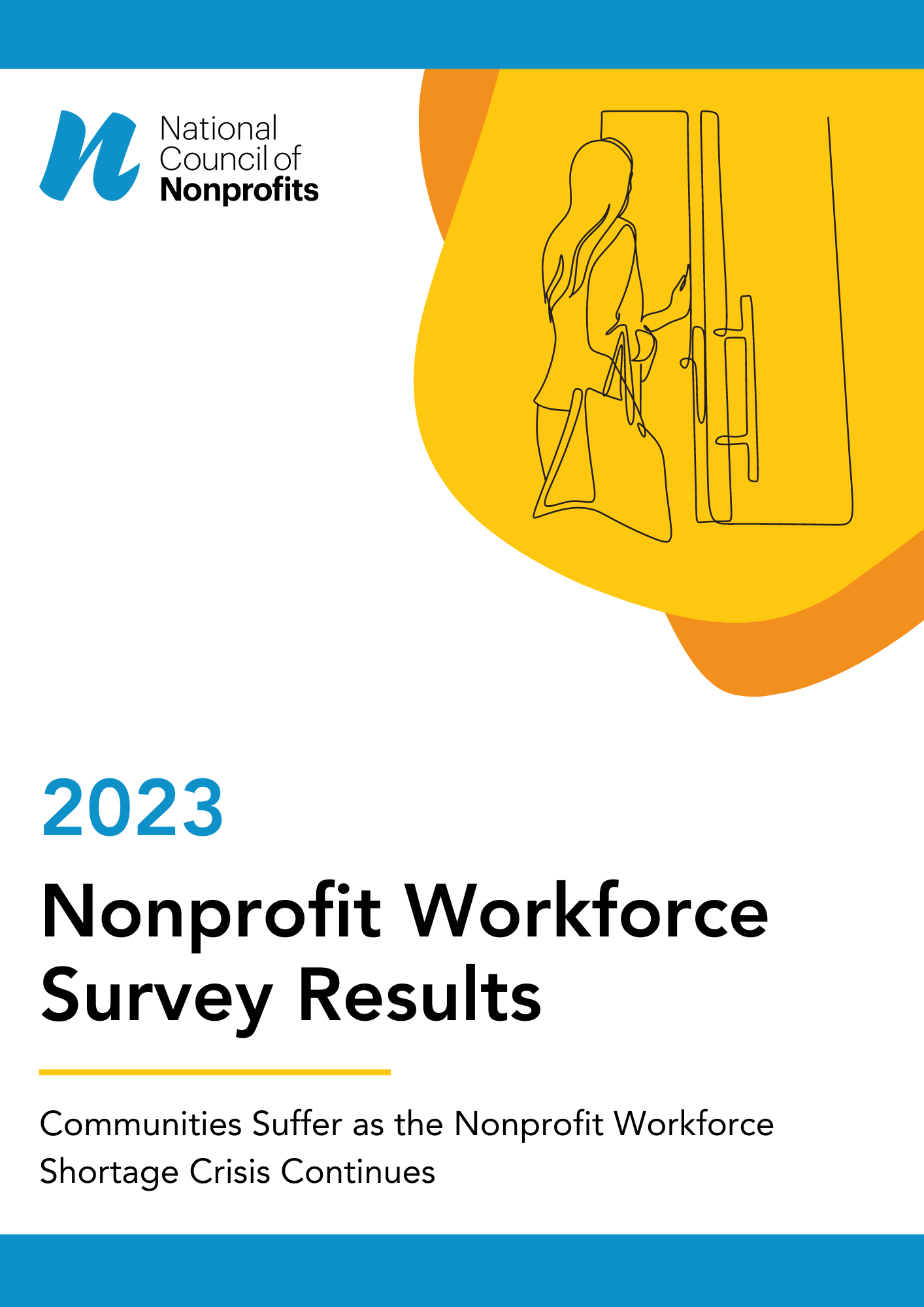
When nonprofits cannot hire enough employees to provide vital services, the public suffers. Data from this survey and others show that along with increased demands for services, there are longer waiting lists, reduced services, and sometimes elimination of services. When any of those happen, the ripple effects cannot be ignored: communities lose access to food, shelter, mental health care, and other vital services on which people depend. Read the new report to learn how the Workforce Shortage Crisis continues to affect nonprofits and the people they serve.
Meeting the Need: Building the Capacity of Community-Based Organizations (Building Movement Project, January 2023)
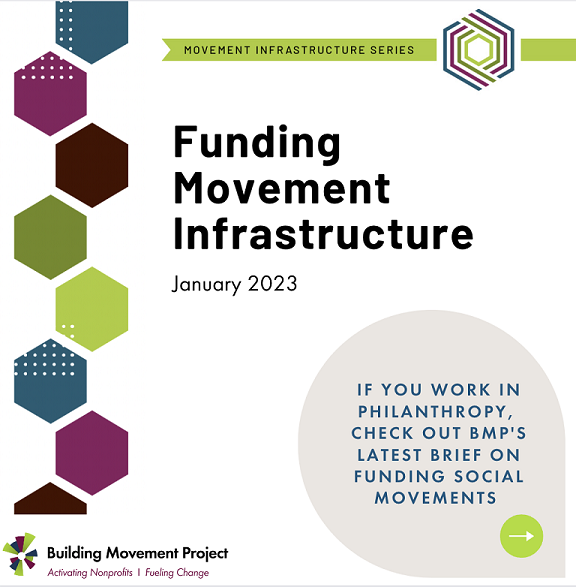
The first in BMP's new series on Movement Infrastructure, Meeting the Need is based on responses to a survey of nonprofit leaders intended to find out what they needed to maintain and build their organizational infrastructure in order to fulfill their missions. Respondents identified the following as their greatest needs: growing their organizations, raising money, and addressing staff issues, especially burnout.
Perspectives from Main Street: The impact of COVID-19 on communities and the entities that serve them (Federal Reserve, November 2022)
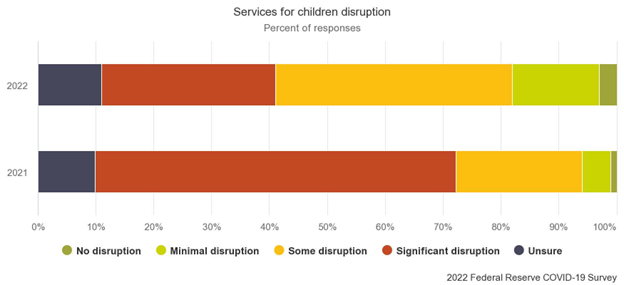
These surveys (earlier surveys conducted in 2021 and 2020 are linked from the same page) included entities other than nonprofits, but the vast majority of respondents were nonprofits. The reports break down the responses by type of entity, demographics of the populations served, issues addressed, financial and other impacts of COVID on the community and the organization, and more. See our analysis of the 2022 data, which revealed continuing disruption among organizations and communities.
Strengthening State and Local Economies in Partnership with Nonprofits: Principles, Recommendations, and Models for Investing Coronavirus State and Local Fiscal Recovery Funds (National Council of Nonprofits, updated April 2022)
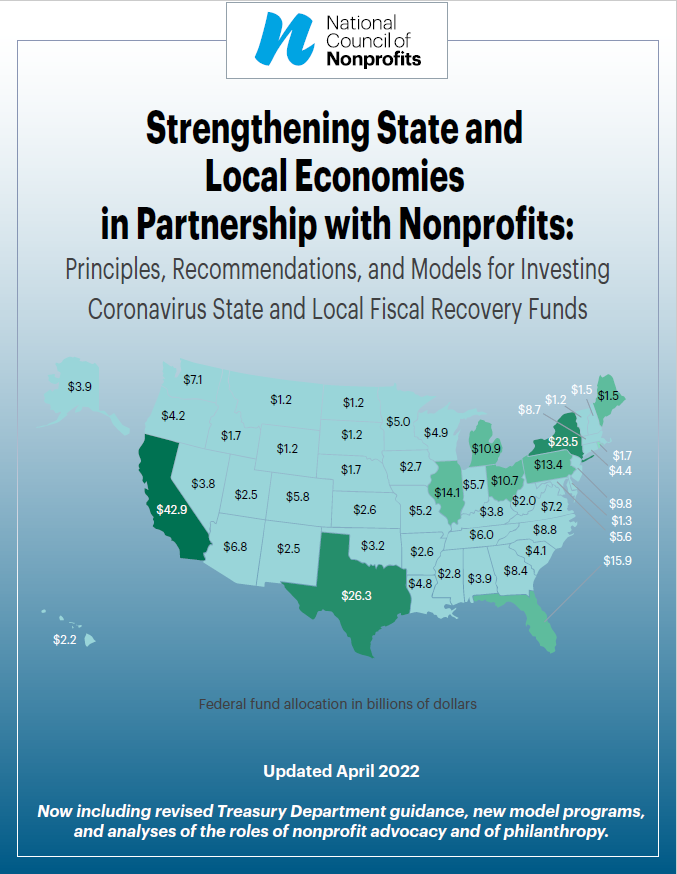
This third edition of our Special Report provides the latest federal guidance and fresh examples from across the country of the successful use of ARPA's "CSLFRF" funds. The Special Report has been serving as a guide for governments, charitable nonprofits, and foundations on investing these funds – totaling $350 billion – to help communities respond, adapt, and recover from the COVID-19 pandemic. The new edition, released April 2022, includes new sections on effective nonprofit advocacy campaigns and examples of how foundations can strengthen and support the equitable distribution of ARPA funds.
Image at top of page: Supporters of the CT Community Nonprofit Alliance telling legislators that community services are essential (image courtesy of the Alliance).